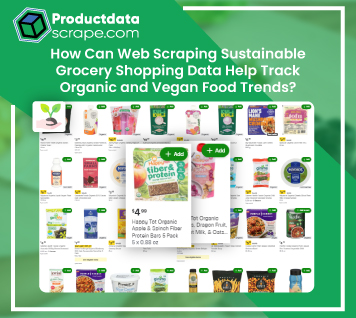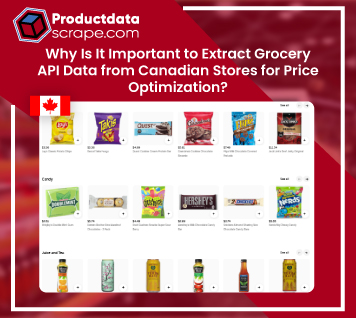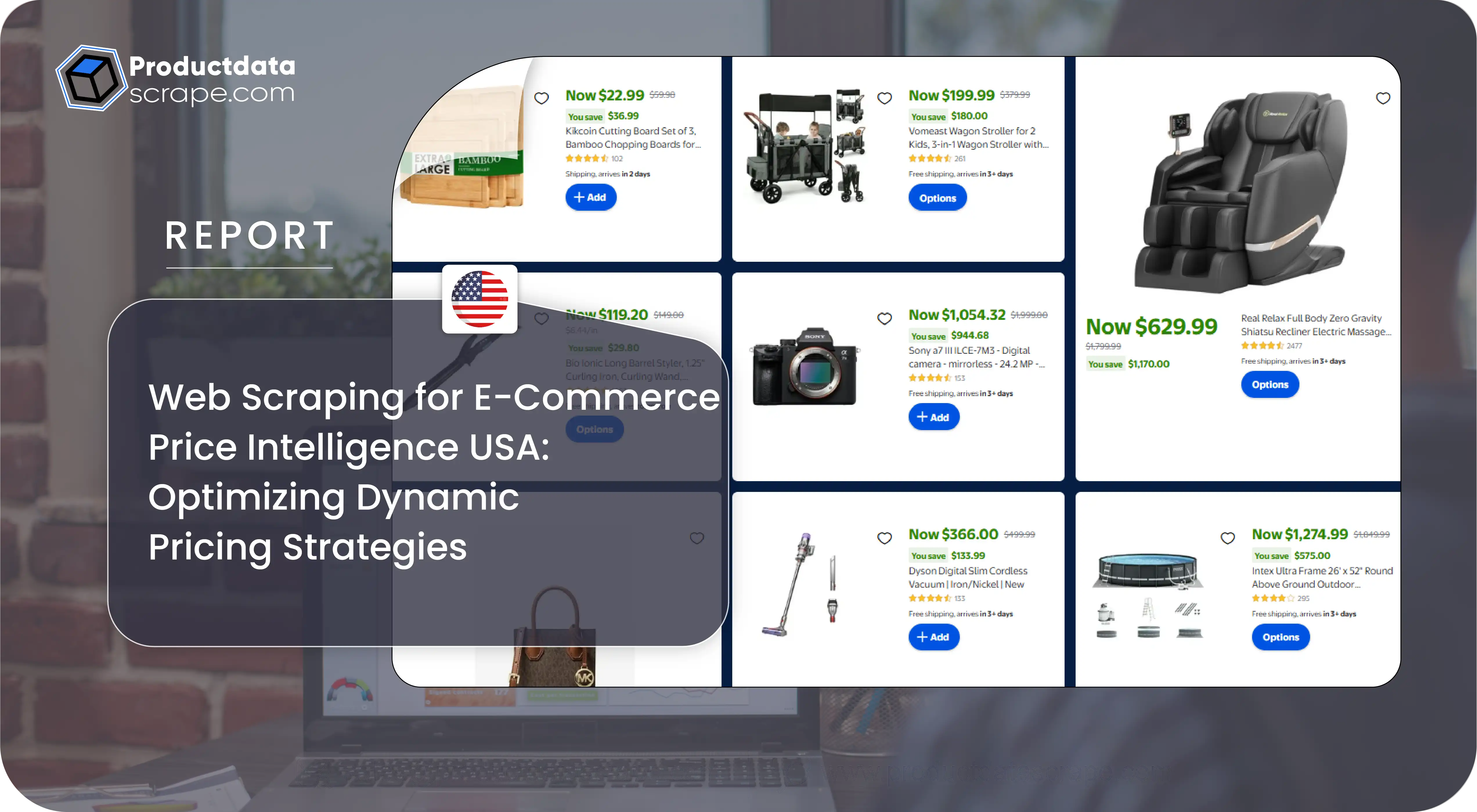
Introduction
Dynamic pricing, also called surge or real-time pricing, is a crucial strategy in the evolving e-commerce sector. It enables businesses to adjust prices based on market demand, competitor pricing, and customer behavior. With rising competition in the USA, companies rely on Web Scraping for E-Commerce Price Intelligence USA to gain actionable insights. Web scraping helps track competitor pricing, identify market fluctuations, and optimize pricing strategies in real time. Businesses use these techniques to Scrape E-Commerce Pricing Trends in the USA, ensuring they stay ahead in the market. By leveraging automation and data extraction, companies can Extract E-Commerce Price Data in the USA to refine their pricing models, improve profitability, and enhance customer engagement. This report explores key trends in dynamic pricing, the significance of web scraping in competitive intelligence, and how businesses integrate data-driven strategies for optimized pricing decisions in the USA's fast-paced e-commerce landscape.
Research Methodology
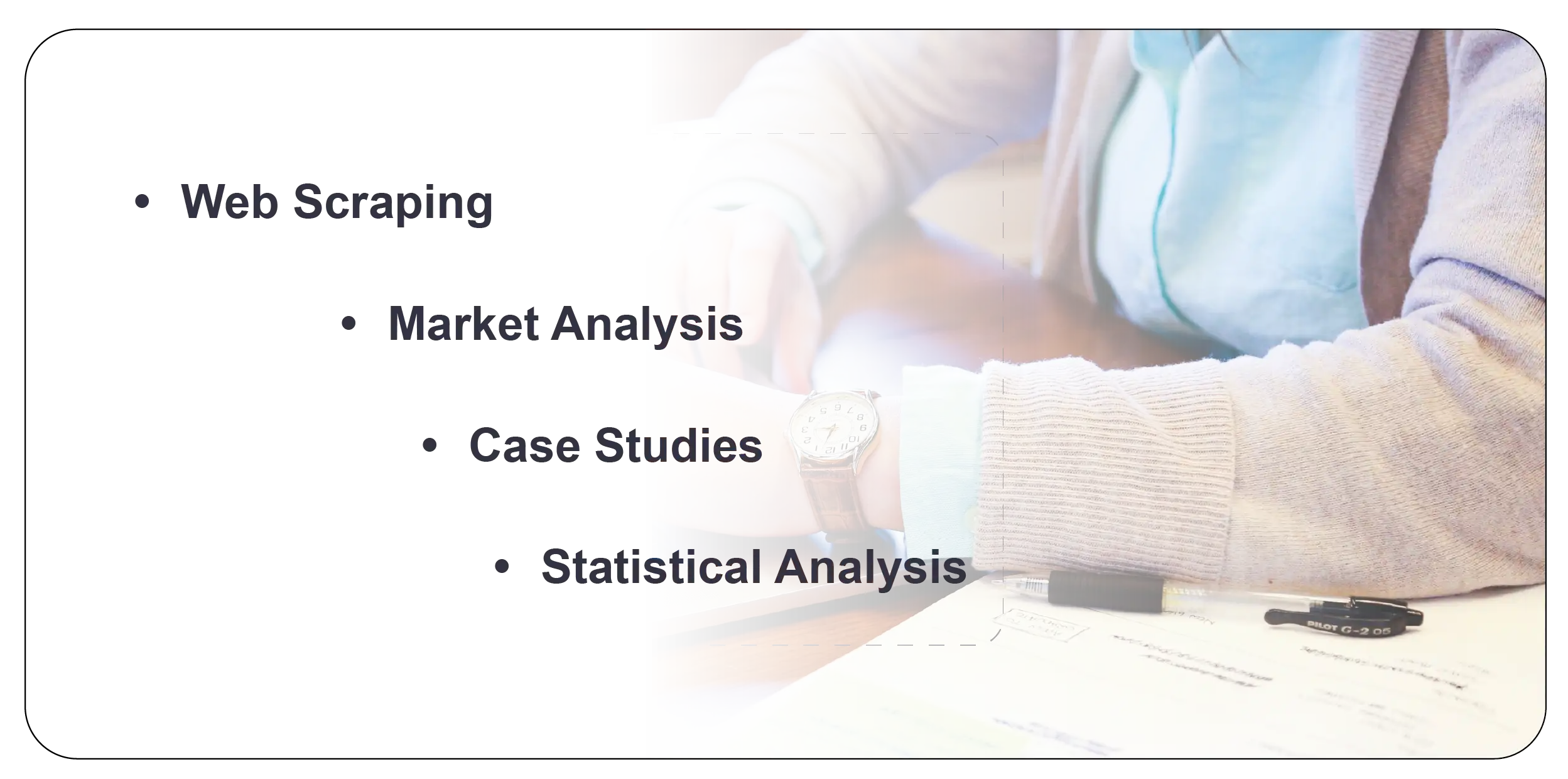
A combination of primary and secondary research methods was utilized to analyze dynamic pricing trends in the USA e-commerce market. The methodology includes:
- Web Scraping: Extracting real-time pricing data from leading e-commerce platforms like Amazon, Walmart, eBay, and Best Buy.
- Market Analysis: Review reports, industry publications, and competitor pricing strategies.
- Case Studies: Evaluating specific instances where dynamic pricing has significantly influenced consumer behavior.
- Statistical Analysis: Identifying pricing fluctuations and patterns over time.
Understanding Dynamic Pricing in E-Commerce
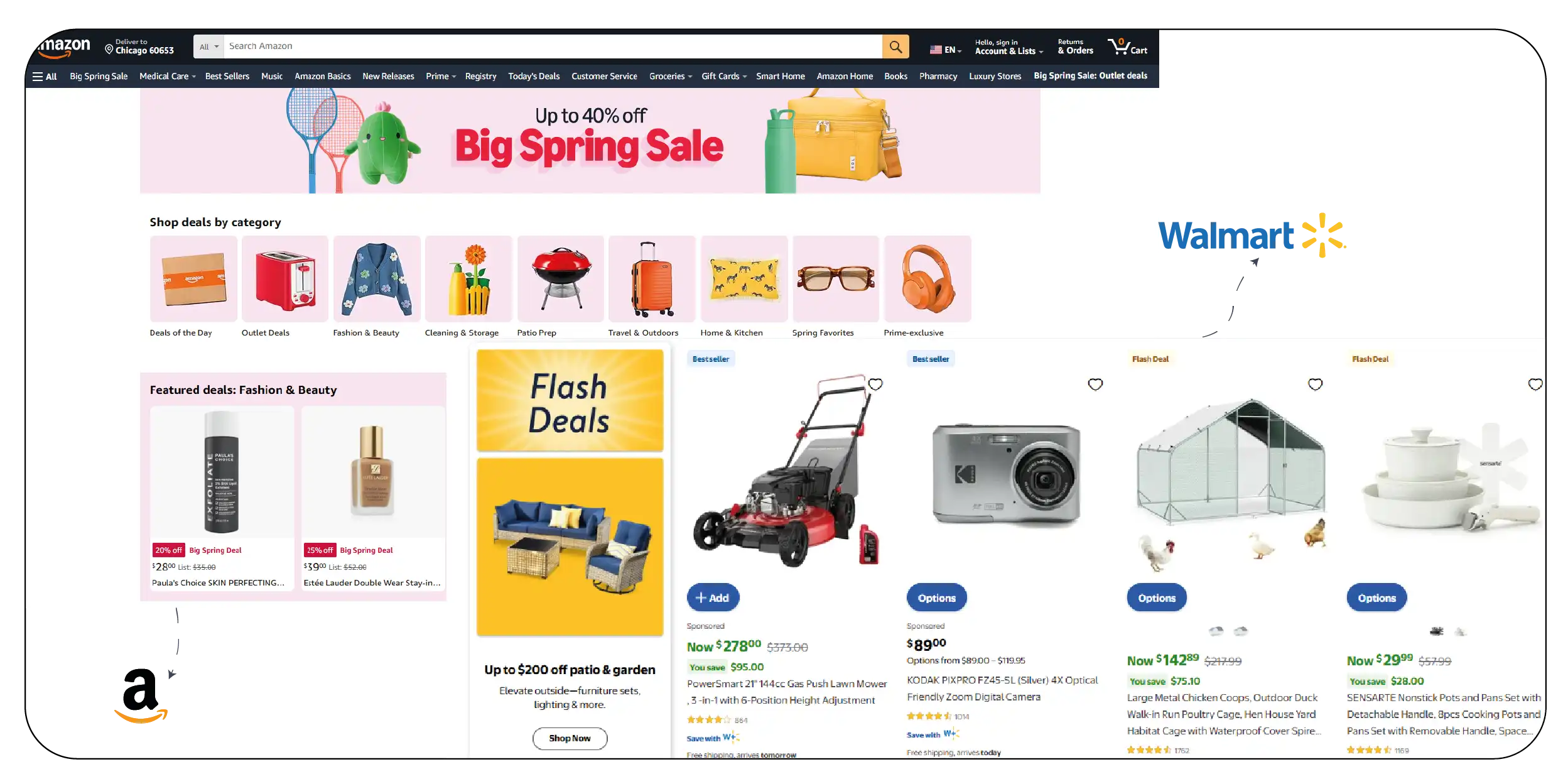
Dynamic pricing is a strategy where prices fluctuate based on demand, competition, time, and market conditions. Businesses use real-time data and algorithms to adjust prices, maximizing revenue and customer engagement. Key factors influencing dynamic pricing include supply-demand balance, competitor pricing, customer behavior, and external elements like economic trends and seasonal variations. Understanding these factors helps businesses optimize pricing strategies effectively.
-
Supply and Demand: Pricing in e-commerce is primarily dictated by product availability and shifting consumer demand. Prices increase when demand surges for a particular product while supply remains limited. Conversely, when supply outpaces demand, prices drop to attract buyers. Businesses Extract USA E-Commerce Pricing Data for Competitive Analysis to understand these fluctuations and optimize pricing accordingly.
-
Competitor Pricing: Companies actively track and adjust prices based on competitor strategies to maintain market competitiveness. By leveraging real-time data extraction, businesses can react to price changes swiftly, ensuring they do not lose customers to rivals. Many e-commerce businesses Monitor E-Commerce Price Fluctuations with Web Scraping to stay ahead of competitors and make data-driven decisions.
-
Consumer Behavior: Personalized pricing strategies rely on analyzing user browsing history, previous purchases, and engagement with discounts or offers. E-commerce platforms Extract USA E-Commerce Pricing Data to implement dynamic pricing tailored to specific customer segments, maximizing conversions and revenue.
-
Time-Based Pricing: Prices fluctuate according to seasonal trends, holiday sales, and promotional events. Businesses Scraping E-Commerce Price Trends in the USA helps retailers predict demand spikes and optimize pricing strategies during peak shopping seasons like Black Friday or Cyber Monday.
-
Geographical Pricing Variations: Pricing may differ based on regional economic conditions, purchasing power, and shipping costs. Companies analyze location-based price differences to maintain profitability while remaining competitive in different markets.
By integrating advanced web scraping techniques, businesses can refine their dynamic pricing strategies and enhance their competitive edge in the ever-evolving e-commerce landscape.
Role of AI and Machine Learning in Dynamic Pricing
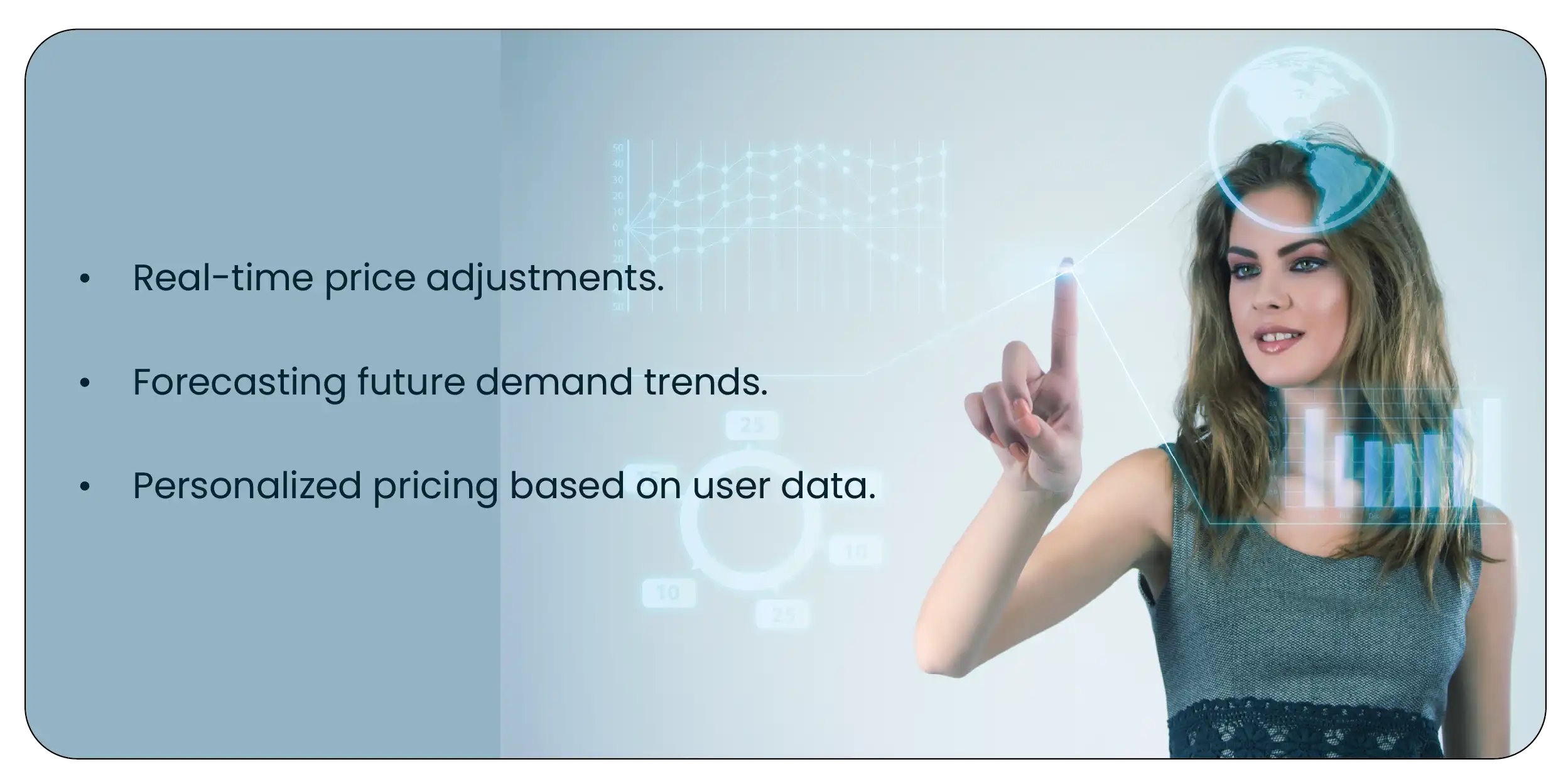
AI and machine learning algorithms analyze vast datasets to predict optimal price points. These technologies enable:
- Real-time price adjustments.
- Forecasting future demand trends.
- Personalized pricing based on user data.
Key Trends in Dynamic Pricing

Dynamic pricing is evolving with advancements in AI, big data, and market analytics. Businesses leverage real-time demand forecasting, personalized pricing, and competitive intelligence to maximize profits. Key trends include AI-driven automation, surge pricing, predictive analytics, and hyper-personalization. Understanding these trends helps businesses stay competitive and adapt pricing strategies to changing market conditions effectively.
1. Increasing Adoption of AI-Driven Pricing Models: Leading e-commerce giants like Amazon and Walmart leverage AI-powered algorithms to optimize pricing dynamically. These advanced models assess various factors, including competitor pricing, real-time demand surges, and historical purchasing patterns. By processing vast datasets, AI ensures retailers can maximize profitability while staying competitive. Businesses increasingly rely on eCommerce data scraping services to collect valuable pricing intelligence and refine their AI-driven pricing strategies.
2. Competitive Intelligence via Web Scraping: Companies use eCommerce Dataset Scraping techniques to monitor competitors' pricing, promotional offers, and inventory availability to stay ahead. Real-time price tracking allows businesses to adjust their pricing models efficiently, ensuring they remain competitive in fast-changing market conditions. By continuously analyzing competitors' moves, e-commerce retailers can refine their pricing strategies and respond proactively.
3. Personalized Pricing and Consumer Behavior Analysis: Modern e-commerce platforms customize pricing based on individual consumer behavior, preferences, location, and browsing history. Web Scraping E-commerce Websites Data enables retailers to analyze customer interactions, past purchases, and engagement patterns, helping them create targeted discounts and personalized offers. This data-driven approach enhances user experience and boosts conversion rates.
4. Impact of Seasonal and Event-Based Pricing: Major sales events like Black Friday, Cyber Monday, and holiday promotions drive significant price fluctuations. Retailers leverage eCommerce Data Scraping to analyze historical sales trends and forecast demand, allowing them to adjust pricing dynamically. This approach helps businesses optimize profits while attracting deal-seeking customers during peak shopping seasons.
5. The Rise of Subscription-Based Pricing Models: E-commerce companies increasingly focus on subscription-based pricing strategies, offering exclusive discounts and perks to loyal customers. Programs like Amazon Prime and Walmart+ encourage long-term customer engagement by providing benefits such as free shipping and member-only deals. Retailers Extract E-Commerce Website Data to assess the impact of these pricing models and refine their subscription offerings.
By integrating web scraping and AI-powered analytics, businesses can enhance their dynamic pricing strategies, improve customer satisfaction, and gain a competitive advantage in the evolving e-commerce landscape.
Analysis of Report Findings
Web Scraping as a Tool for Competitive Intelligence
Web scraping helps businesses monitor price fluctuations and market trends effectively. Companies extract:
- Competitor pricing details.
- Customer reviews and sentiment analysis.
- Inventory levels to assess market demand.
Price Variations of Popular Consumer Electronics in the USA E-Commerce Market
| Product |
Amazon Price ($) |
Walmart Price ($) |
Best Buy Price ($) |
eBay Price ($) |
| iPhone 14 |
999 |
979 |
989 |
950 |
| Samsung Galaxy S23 |
899 |
879 |
899 |
870 |
| Sony PS5 |
499 |
489 |
495 |
480 |
| Apple MacBook Air |
1199 |
1179 |
1189 |
1150 |
Case Study: Amazon’s Dynamic Pricing Strategy
Amazon is a pioneer in dynamic pricing, adjusting prices millions of times daily. Key insights from Amazon’s pricing strategy include:
- Frequent price changes based on competitor monitoring.
- AI-driven predictive pricing models.
- Leveraging customer purchase history for personalized pricing.
Challenges in Dynamic Pricing Implementation
1. Consumer Perception Issues: Price discrepancies may lead to customer dissatisfaction.
2. Regulatory Concerns: Authorities are scrutinizing price manipulation practices to ensure fair competition.
3. Technical Challenges: Managing and analyzing large volumes of real-time data requires advanced infrastructure.
Impact of Web Scraping on Pricing Strategies
Advantages of Web Scraping for Dynamic Pricing
- Real-time Competitive Analysis: Allows companies to respond quickly to competitor price changes.
- Demand Forecasting: Helps predict market trends based on historical data.
- Enhanced Decision-Making: Provides data-driven insights for pricing optimization.
Impact of Web Scraping on Pricing Strategies
| Pricing Strategy |
Effectiveness Without Web Scraping |
Effectiveness With Web Scraping |
| Competitor Price Monitoring |
Low |
High |
| Demand Prediction |
Medium |
High |
| Seasonal Adjustments |
Medium |
High |
| Personalized Pricing |
Low |
High |
Future Trends in Dynamic Pricing and Web Scraping
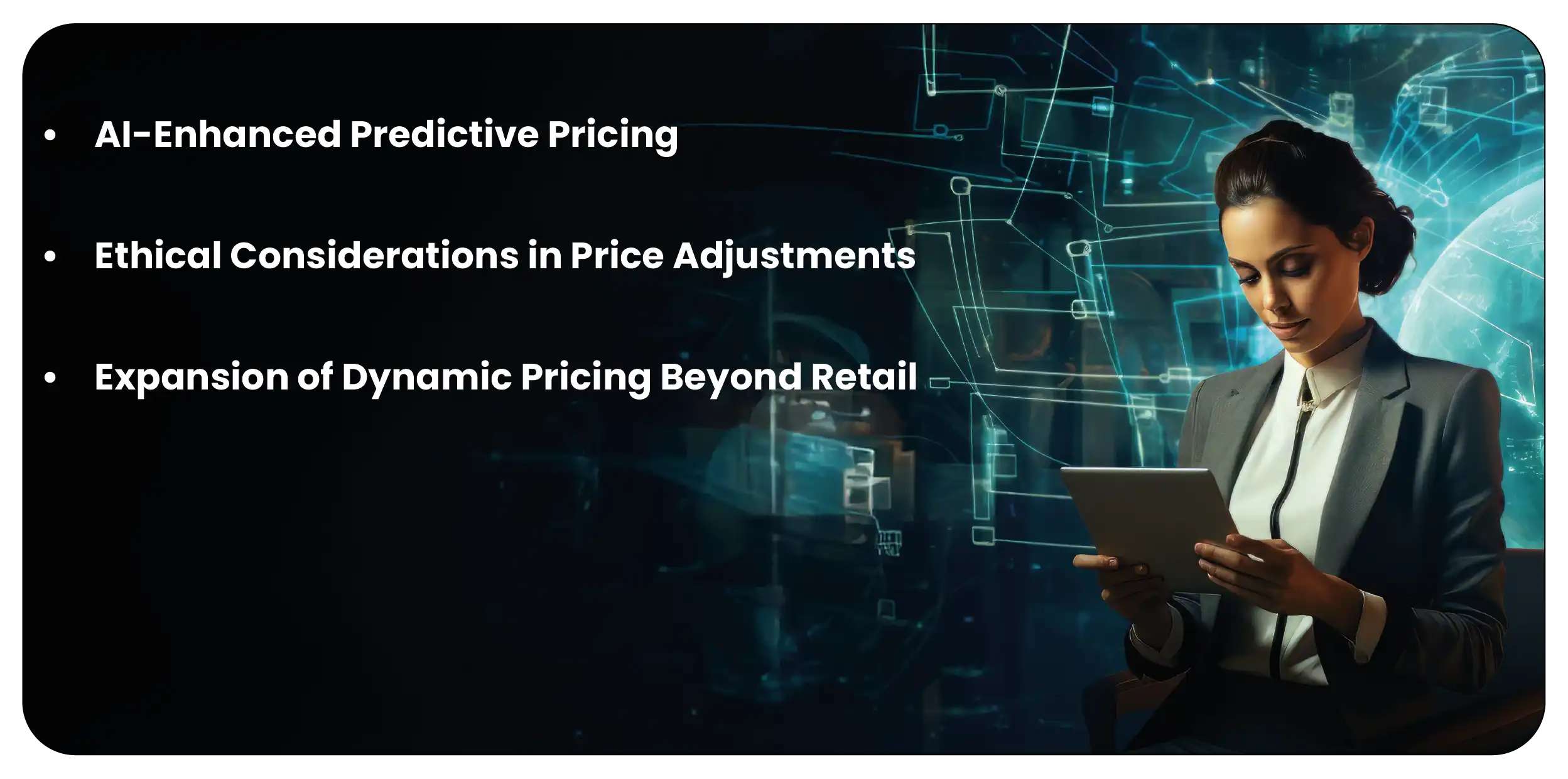
- AI-Enhanced Predictive Pricing: AI will play a larger role in price forecasting, allowing businesses to anticipate demand fluctuations and adjust pricing accordingly.
- Ethical Considerations in Price Adjustments: Transparency in dynamic pricing will become crucial, with increasing consumer awareness and regulatory oversight.
- Expansion of Dynamic Pricing Beyond Retail: Travel, entertainment, and healthcare industries also adopt dynamic pricing models for better revenue management.
Conclusion
Dynamic pricing is reshaping the USA e-commerce landscape, providing businesses a competitive edge. Web scraping has emerged as a powerful tool for monitoring real-time price fluctuations, enabling companies to make informed pricing decisions. As AI and machine learning technologies evolve, dynamic pricing strategies will become more sophisticated, driving efficiency and profitability in the e-commerce sector. However, ethical considerations and regulatory compliance will be crucial in ensuring fair pricing practices. Businesses leveraging web scraping for competitive intelligence must balance aggressive pricing strategies with consumer trust and market fairness.
At Product Data Scrape, we strongly emphasize ethical practices across all our services, including Competitor Price Monitoring and Mobile App Data Scraping. Our commitment to transparency and integrity is at the heart of everything we do. With a global presence and a focus on personalized solutions, we aim to exceed client expectations and drive success in data analytics. Our dedication to ethical principles ensures that our operations are both responsible and effective.








